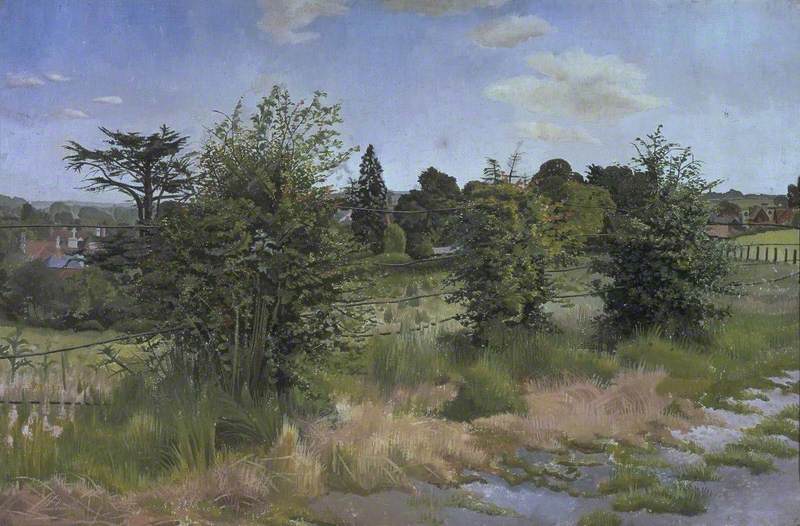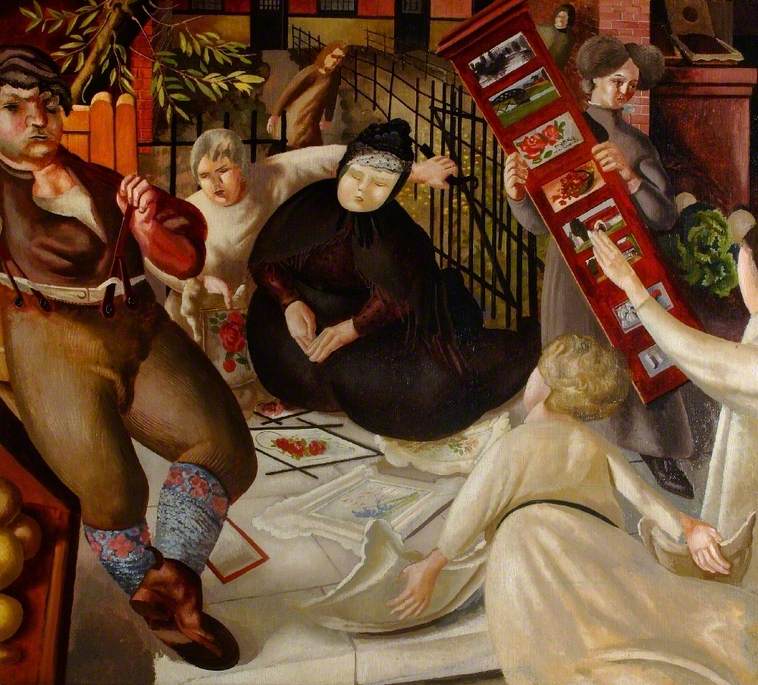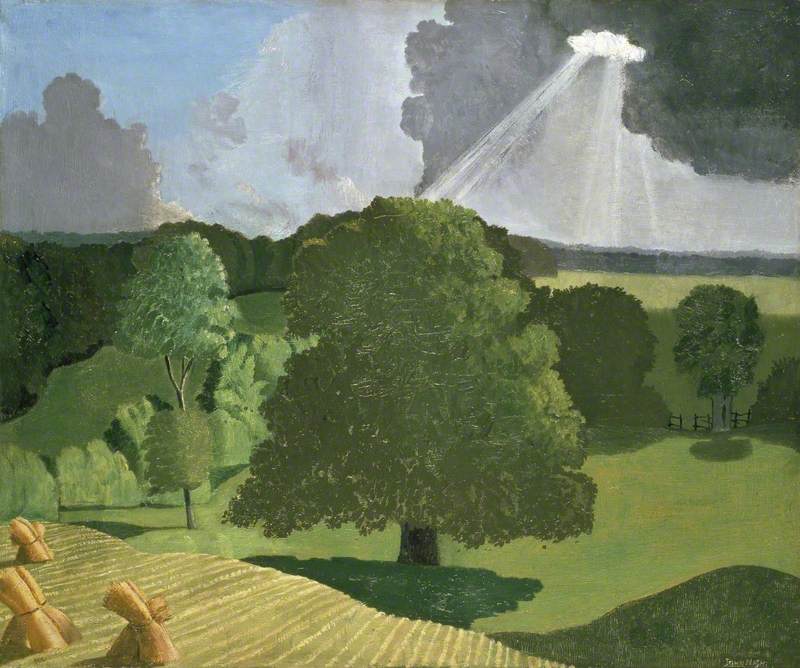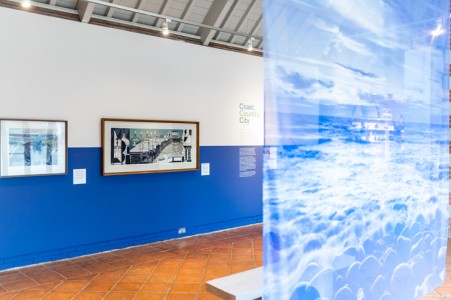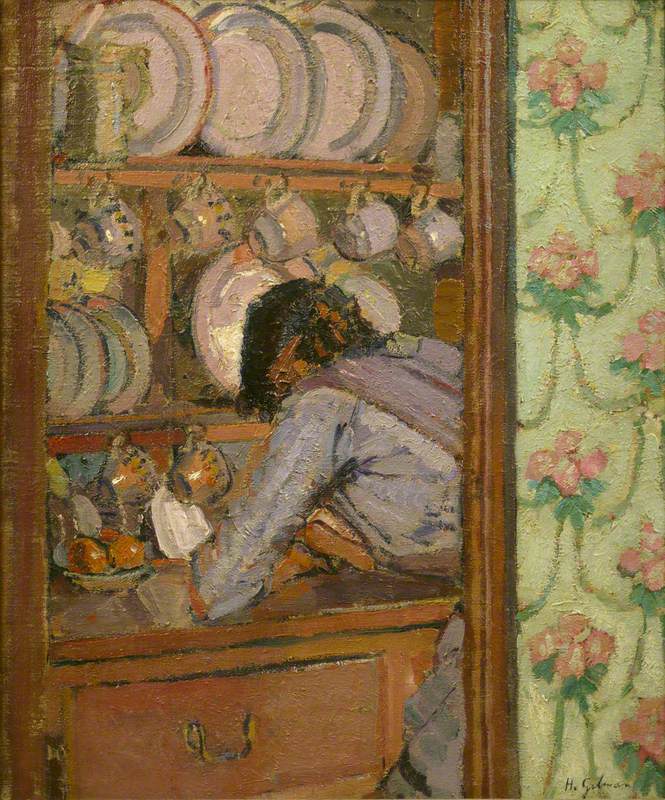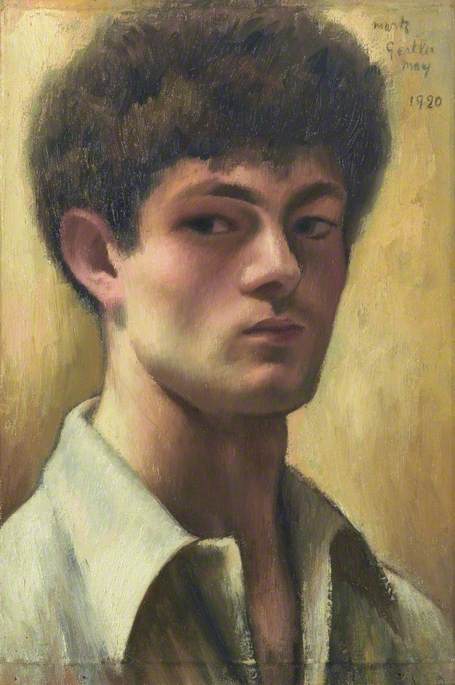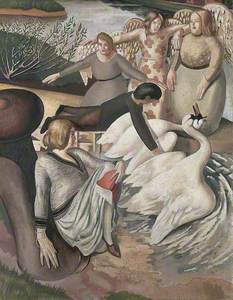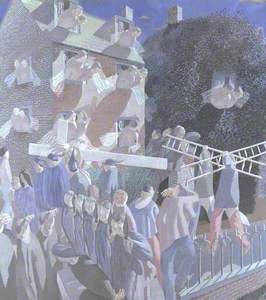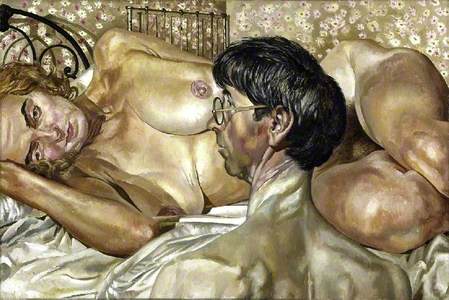In 1933, John Rothenstein, then director of Leeds City Art Gallery, secured the first work by Stanley Spencer for a public collection outside London. Separating Fighting Swans (c.1932/1933) is an exuberant painting featuring stylised figures and two angrily entwined swans.
In the same year, the Tate purchased a small landscape by Spencer, Terry’s Lane, Cookham (c.1932). This acquisition is reputed to have surprised the artist himself since the work is modest in subject, showing a country lane overgrown with weeds.
It joined the Tate’s earlier acquisition in the 1920s of two major religious figure compositions: Christ Carrying the Cross (1920) and The Resurrection, Cookham (1924–1927) and was acquired at a moment when realism again came to the fore in Britain and Europe.
Terry’s Lane, Cookham broadens our understanding of Spencer's interest in both the visionary and the observational. All these works in public collections now feature on Art UK, which allows us to see the rich variety in Spencer’s painting across a career that spanned five decades.
Art UK is unique in bringing together so many collections from across the country: works from the Stanley Spencer Gallery in the artist’s beloved home village of Cookham; the Ferens Art Gallery in Hull; the Hunterian Art Gallery, Glasgow; and Southampton City Art Gallery, to name but a few.
When John Rothenstein became Director of the Tate in 1938, his enthusiasm for Spencer meant holdings of this artist grew, something which continued under subsequent directors. Art UK allows us to scroll through over 190 works by Spencer from more than 40 institutions across the UK, including 25 from Tate, and also lets us observe the growth of the nation’s collections.
These Spencer paintings grouped together form an online retrospective and through them Stanley Spencer’s artistic explorations develop. They reveal his interest in human spirit and endeavour as in the Imperial War Museums’s epic Shipbuilding on the Clyde series, made in response to activities on the home front in the Second World War.
Shipbuilding on the Clyde: Welders
(centre) 1941
Stanley Spencer (1891–1959) 
They reveal his exploration of religious themes. The combination of the local and the religious are critical to Spencer's work and spiritual events often take place in his home village of Cookham and feature local people as in Christ’s Entry into Jerusalem (c.1920), now in the Leeds Museums and Galleries collection.
The paintings on this website also reveal his exploration of sexual themes in works such as Self Portrait with Patricia Preece (1937) at The Fitzwilliam Museum in Cambridge.
In 1947 Spencer declared ‘I wish my shows could include the nude (oils) that I have done. I think to have them interspersed in a show would convey the range of my work... they have such an effect on the other works’.
Art UK also shows how Spencer pays attention to the everyday, such as a cottage wall laden with wisteria or a garden teeming with plant life. Often realised in painstaking detail, the paintings of these things seen here are contrasted with loosely drawn sketches, deftly made with few brushstrokes, in preparation for larger, more ambitious works. Spencer was an artist for whom the detail made his vision resonate.
Nicholas Serota, Former Director, Tate

